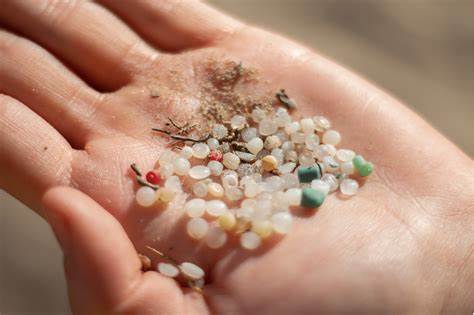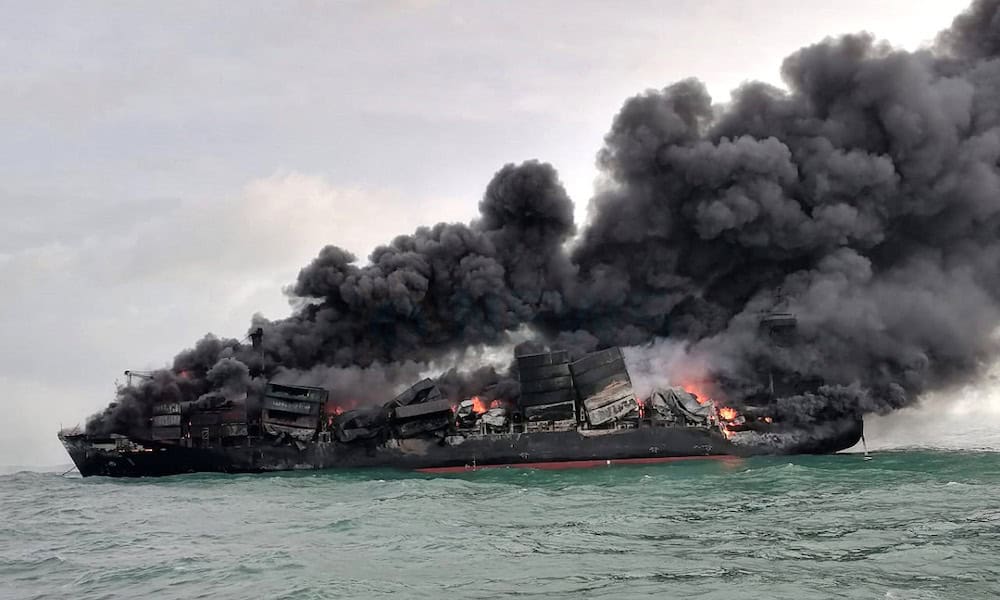
Plastic nurdles, small plastic pellets about the size of a lentil, are often overlooked in the plastic pollution conversation, yet they are alarmingly pervasive and hugely problematic. They serve as the raw material for virtually all plastic products, and are melted down to make plastics packaging to bottles to household items and beyond. Think of them as the go to ingredient for nearly all plastic manufacturing.
Despite their harmless appearance these tiny pellets pose a significant threat to both the environment and human health because every year, almost 450,000 metric tonnes of nurdles are estimated to poison the environment through accidental releases.. Understanding the dangers of these plastic nurdles is essential for addressing the broader plastic pollution crisis that plagues our planet.
How Plastic Nurdles End Up In Our Oceans and Rivers
An investigation by the media outlet Vox in 2022 discovered that nurdles “often escape from the plastic production process in mundane ways, slipping into drains at factories or spilling out of cargo containers while being transported by trains and ships.” Sometimes too they are also deliberately dumped.
When they get into the environment, either accidentally during production, manufacturing, transportation, via handling or intentionally as waste, they are easily carried by rivers and streams into our oceans. These pellets are by now ubiquitous in the marine environment, often found in large quantities on beaches and in oceans worldwide.
Notable Plastic Nurdle Spills
Notable plastic nurdle spills have caused widespread pollution in various parts of the world. In 2021, the container ship MV X-Press Pearl caught fire and sank off the coast of Colombo, Sri Lanka, releasing around 1,680 tons of plastic nurdles into the ocean.

MV X-Pearl on fire
In 2020, a barge carrying nurdles capsized in the Mississippi River, USA, leading to an estimated 750 million nurdles being released into the water. In 2017, a storm in Durban Harbour, South Africa, caused a shipping container carrying approximately 2.25 billion nurdles to be lost in the harbor. Additionally, in 2012, Typhoon Vicente in Hong Kong resulted in the release of containers filled with around 1,008 tons of nurdles into the sea. These incidents highlight how quickly industrial accidents can cause severe environmental damage.
How Do Nurdles Hurt Wildlife?
The environmental hazards posed by plastic nurdles are vast and varied: Marine animals, such as fish, seabirds, and turtles, often mistake nurdles for food. Ingesting these plastic pellets can lead to physical harm, including blockages in the digestive system, malnutrition, and even death.

On beaches, large quantities of nurdles can smother small organisms like hatching turtles and plants like seagrass growing in the sand. In the ocean, nurdles can interfere with coral reefs and other critical marine habitats, further exacerbating the decline of these vital ecosystems.
Nurdles are not just physical pollutants; they are made from fossil fuels and contain harmful chemicals such as phthalates, Bisphenol A (BPA), flame retardants, toxic metals and PFAS that leach out of them into their surroundings as well as wildlife directly.
The chemicals absorbed and added to nurdles, such as bisphenol A (BPA), phthalates, forever chemicals (PFAS), DDT, PCBs, and mercury, are known endocrine disruptors. Continuous exposure to these chemicals, even at low levels, can have cumulative adverse effects on health. These substances can interfere with the body’s natural systems, leading to a range of health problems, including neurodevelopment and neurological disorders, reduced fertility, inflammation, obesity, cancer, and increased susceptibility to certain diseases.
Human Health Risks Associated with Plastic Nurdles
When marine animals ingest nurdles or the toxic chemicals that leach from them, these toxins can accumulate in their bodies and poison them. Moreover, these plastic poisons bioaccumulate in fish and other wildlife, entering the food chain and posing risks to predators, including humans. One of the primary pathways through which nurdles affect human health is through the consumption of contaminated seafood, posing a risk to humans who consume this seafood.
Nurdles also act as chemical sponges,
absorbing toxic substances from their surroundings.
Nurdles also act as chemical sponges, absorbing toxic substances from their surroundings. These include persistent organic pollutants (POPs) such as pesticides, industrial chemicals and heavy metals and even bacteria and viruses. This turns the nurdles into vectors for transporting dangerous chemicals and pathogens over and above the toxic cocktail used to create them in the first place.
Nurdles contribute to the broader issue of microplastic pollution. Over time, these pellets can break down into smaller particles, further contaminating the environment. Microplastics can then enter the human body through various routes, including inhalation and ingestion of contaminated food and water.
Nurdle Superheroes
One notable win against nurdle pollution was led by former shrimp fisherwoman turned nurdle activist, Diane Wilson. She took on Formosa Plastics after it repeatedly dumped plastic nurdles in Lavaca Bay, Matagorda Bay, and Cox’s Creek in the Gulf of Texas. In 2019, after decades of fighting back, Wilson won a landmark $50 million settlement from Formosa for its persistent plastic nurdle pollution, a feat that would win Wilson the prestigious Goldman Environmental Prize in 2023.

Formosa Plastics plant
Recently, Formosa Plastics has attempted a comeback in that area, and as of this writing a public meeting is slated for September 24 in Edna, Texas. The purpose of the meeting is to discuss further expansion of a Formosa Plastics plant and the dangers it presents to human health and the environment.

Addressing the Plastic Nurdle Crisis
Given the severe environmental degradation, biodiversity loss and human health risks posed by plastic nurdles, it is crucial to implement measures to mitigate their impact. Several strategies can be employed to address this issue.
Governments and regulatory bodies need to enforce stricter regulations on the production, transportation, and disposal of plastic nurdles. This includes mandating best practices for spill prevention and response, as well as imposing penalties for non-compliance. Enhanced monitoring and enforcement can help reduce the likelihood of nurdles entering the environment. The Plastic Pellet Free Waters Act is one bill that aims to prevent plastic pellets and other pre-production plastic from polluting waterways.
Raising public awareness about the dangers of plastic nurdles is essential for fostering a culture of environmental stewardship. Educational campaigns can inform the public about the impact of nurdles on the environment and human health, encouraging individuals to advocate for stronger regulations and support sustainable practices like plastic reduction and cleanup efforts.
Plastic nurdles may be small, but they are a key component in the plastic pollution crisis, addressing the dangers of nurdles requires a multifaceted approach involving stricter regulations, corporate responsibility, public awareness, and ongoing research. By taking concerted action, we can mitigate the risks posed by plastic nurdles and work towards a cleaner, healthier planet for future generations.








